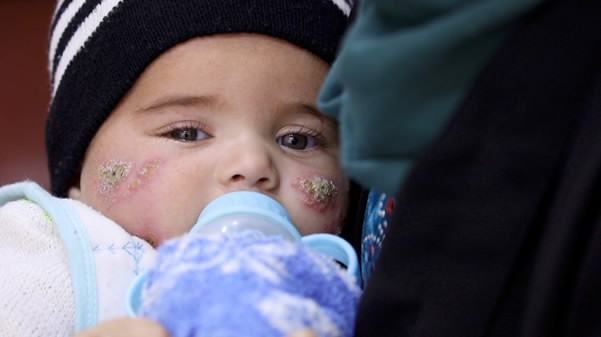Millions of displaced Iraqis have been returning home, following a victory declared by the government over ISIL. However, many of them have been confronted with damaged living conditions and inadequate health services.
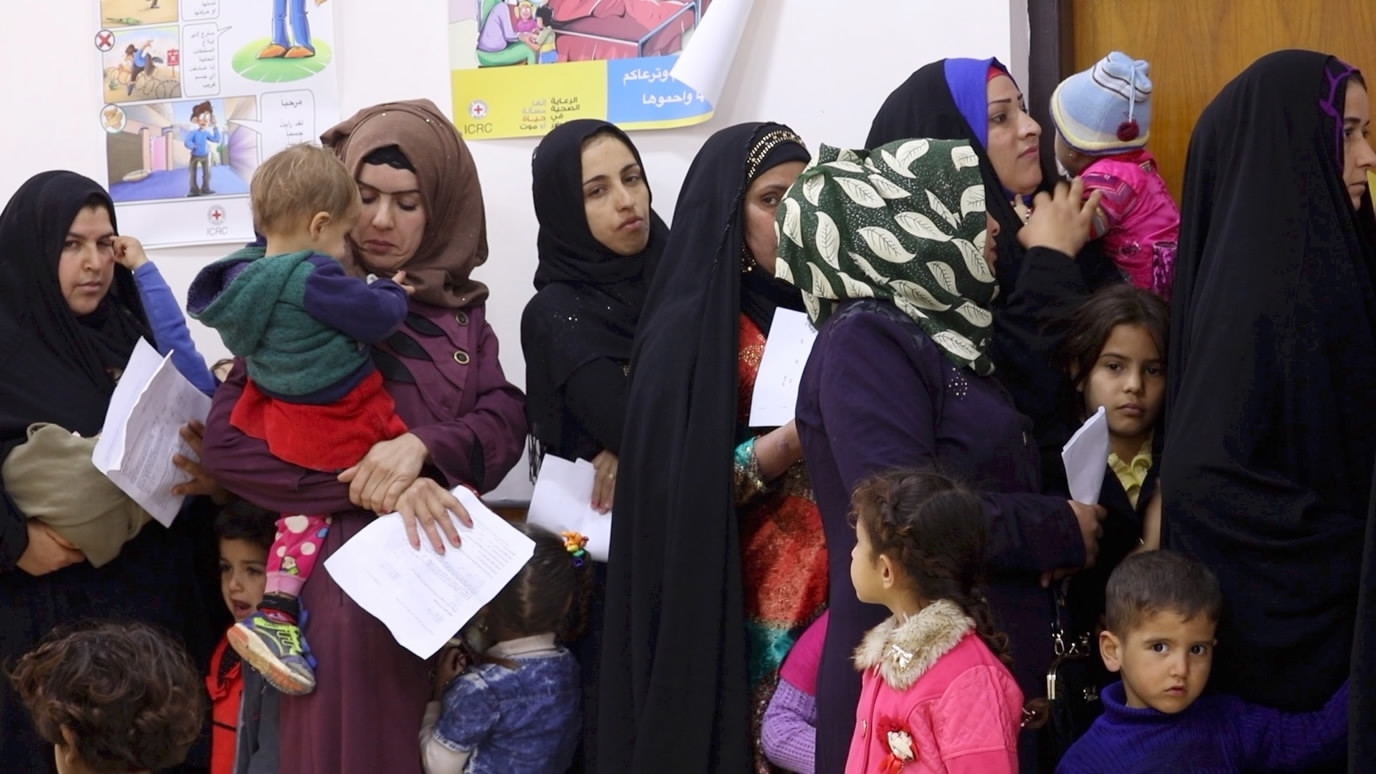
Every day, al-Udhaim PHCC sees a huge influx of patients with “Baghdad Boil.”/CGTN Photo
Every day, al-Udhaim PHCC sees a huge influx of patients with “Baghdad Boil.”/CGTN Photo
At al-Udhaim in eastern Diyala province, about 90 kilometers from Baghdad, a large number of people are coping with an infectious disease, known as “Baghdad Boil,” a common name for cutaneous Leishmaniasis.
The skin infection is caused by Leishmania parasites, transmitted by sand fly bites. The initial phase brings a lot of suffering, as it causes pain and itchiness, and even when it's healed, permanent scars remain and are often the cause of serious social prejudice.
In January, some 500 cases were recorded at al-Udhaim Primary Health Care Center (PHCC).
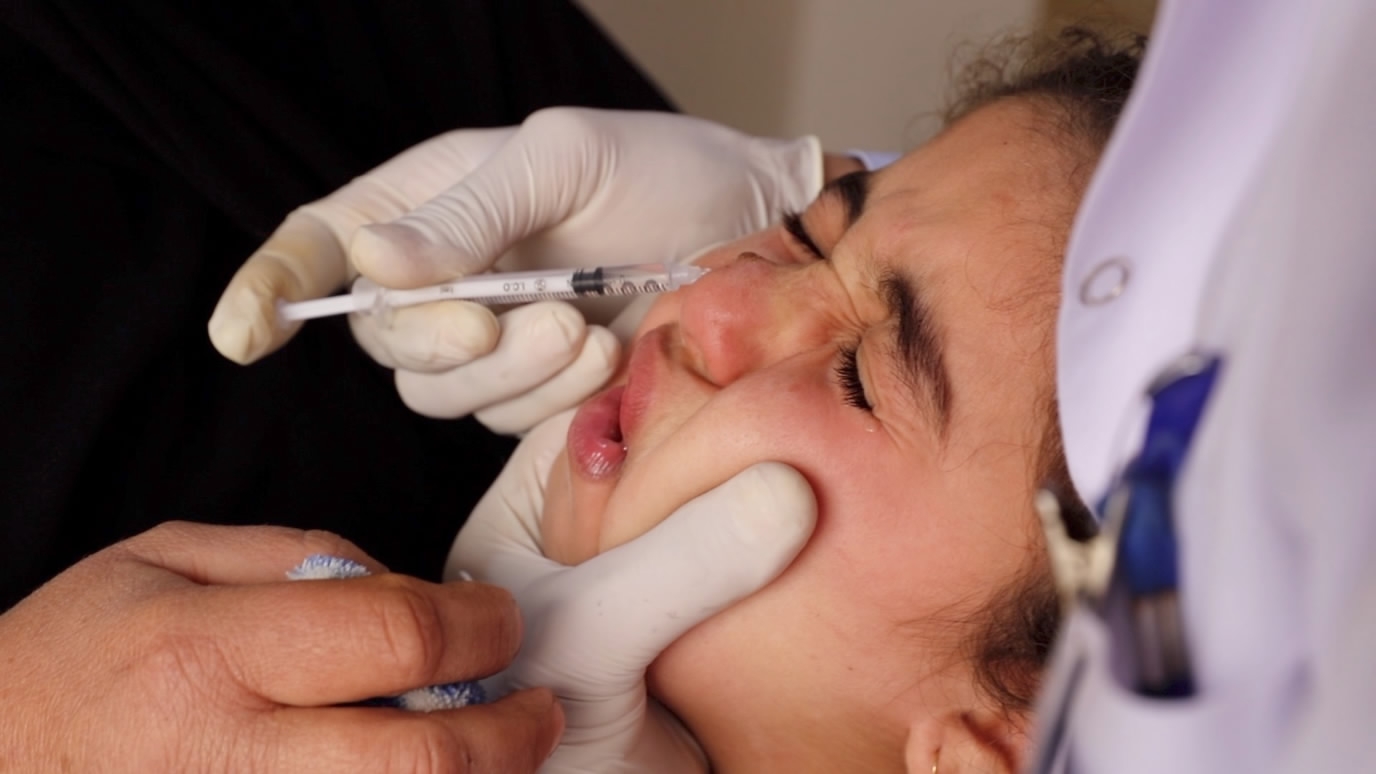
An Iraqi girl receiving an injection for the “Baghdad Boil,” /CGTN Photo
An Iraqi girl receiving an injection for the “Baghdad Boil,” /CGTN Photo
Hannah um Hussein, who was taking her seven-month-old daughter, Hanadi, for treatment at the center, says the disease is upsetting everyone.
“In the beginning, it’s like a bite, then it got worse and worse," Hannah told CGTN. "Then I decided to bring her here to get treated. I come once a week, to give her injections.”
A total of her six family members have developed symptoms.
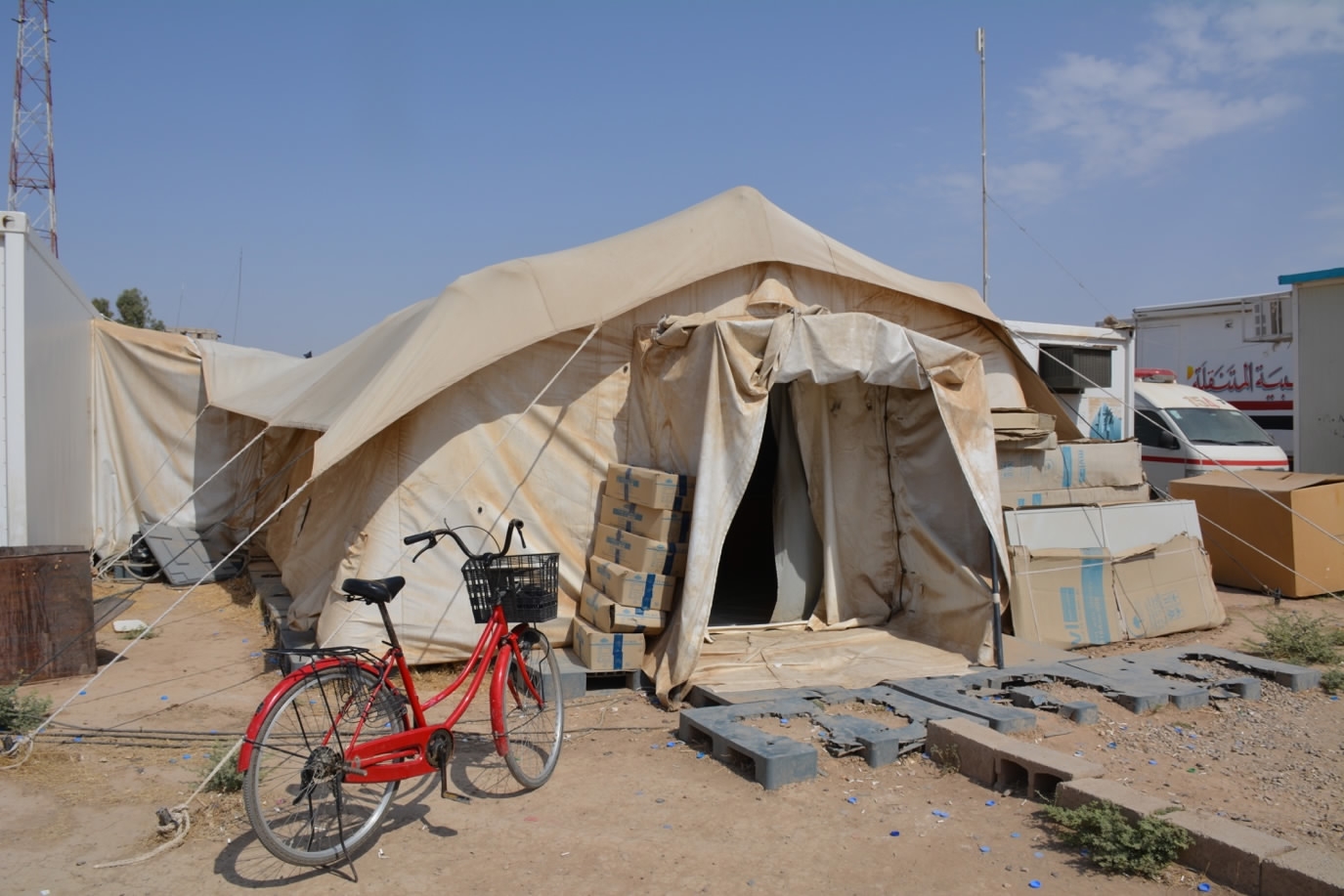
Al-Udhaim PHCC was launched by the International Committee of the Red Crescent and Red Cross in March 2017, and became operational in January 2018. /ICRC Photo
Al-Udhaim PHCC was launched by the International Committee of the Red Crescent and Red Cross in March 2017, and became operational in January 2018. /ICRC Photo
Without treatment, the disease takes several months or even years to heal. There’s not a human vaccine available to prevent the infection. Doctors say the best way is to avoid sand fly bites. Local people are advised to have mosquito nets, and stop sand flies from coming into their houses. Meanwhile, animals like cows, sheep and others should be vaccinated.
Safaa Saeed Ahmed, 12, is worried about his prolonged suffering. “It has been four to five months since it appeared for the first time," he told CGTN. "I have severe pains and bleeding sometimes, especially during sleep.”
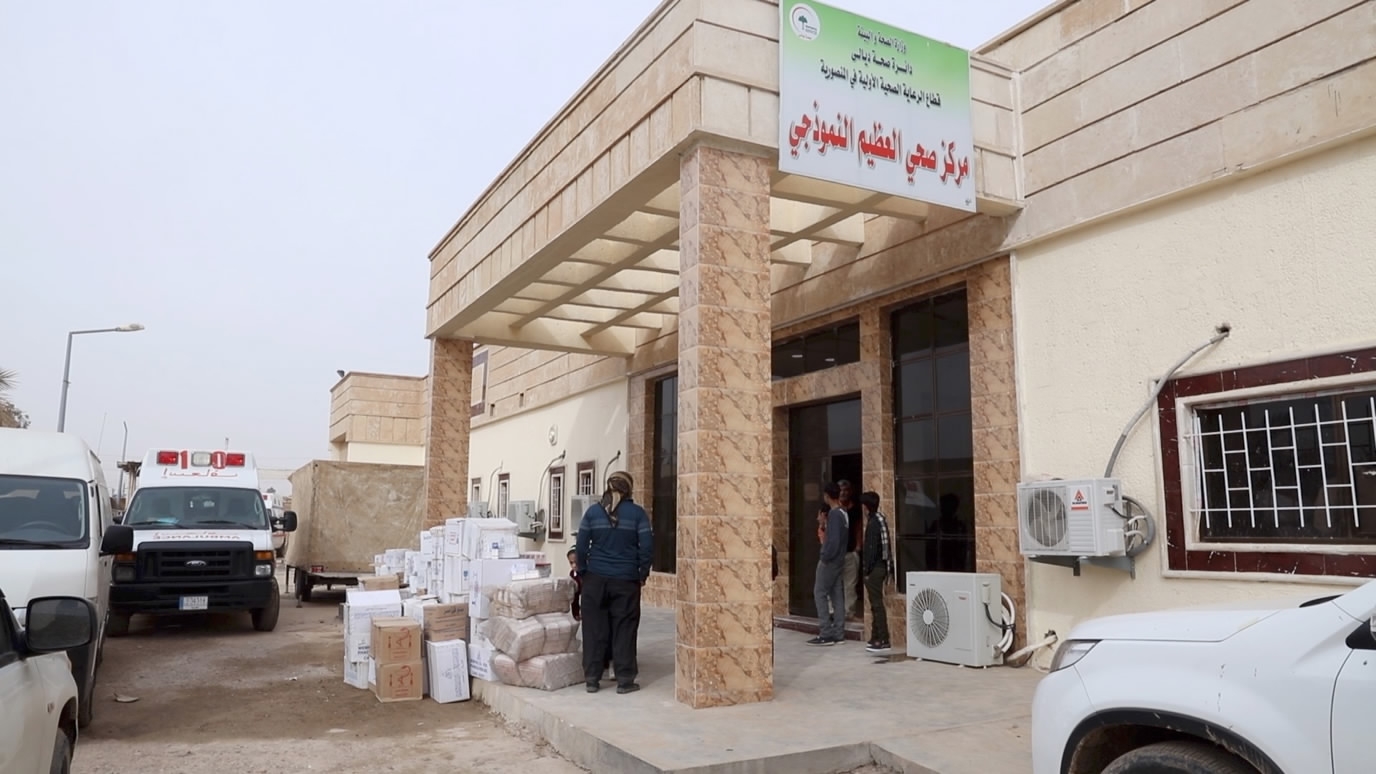
A tent clinic was set up after the region’s hospital was looted and destroyed by ISIL militants in 2014. It provides only basic medical services. /CGTN Photo
A tent clinic was set up after the region’s hospital was looted and destroyed by ISIL militants in 2014. It provides only basic medical services. /CGTN Photo
Qahtan Hadi Hussein, a medical assistant working at al-Udhaim PHCC, shared his ideas about the disease outbreak.
He explained that the region was deserted for a while during the conflict. But when the displaced residents returned, there were no sanitation measures that would have prevented an outbreak. He told CGTN that new cases arise continuously.

The medical center is well-equipped to provide preventive and curative care for local residents. /CGTN Photo
The medical center is well-equipped to provide preventive and curative care for local residents. /CGTN Photo
Al-Udhaim was seized by ISIL militants in June 2014. Incessant bombings destroyed the town’s only hospital. In March 2017, the International Committee of the Red Crescent began recovery efforts to meet rising medical demands.
As told by Huda Sattar, ICRC Medical Field Officer, al-Udhaim PHCC is the only health facility in the vicinity. It serves around 40,000 people.
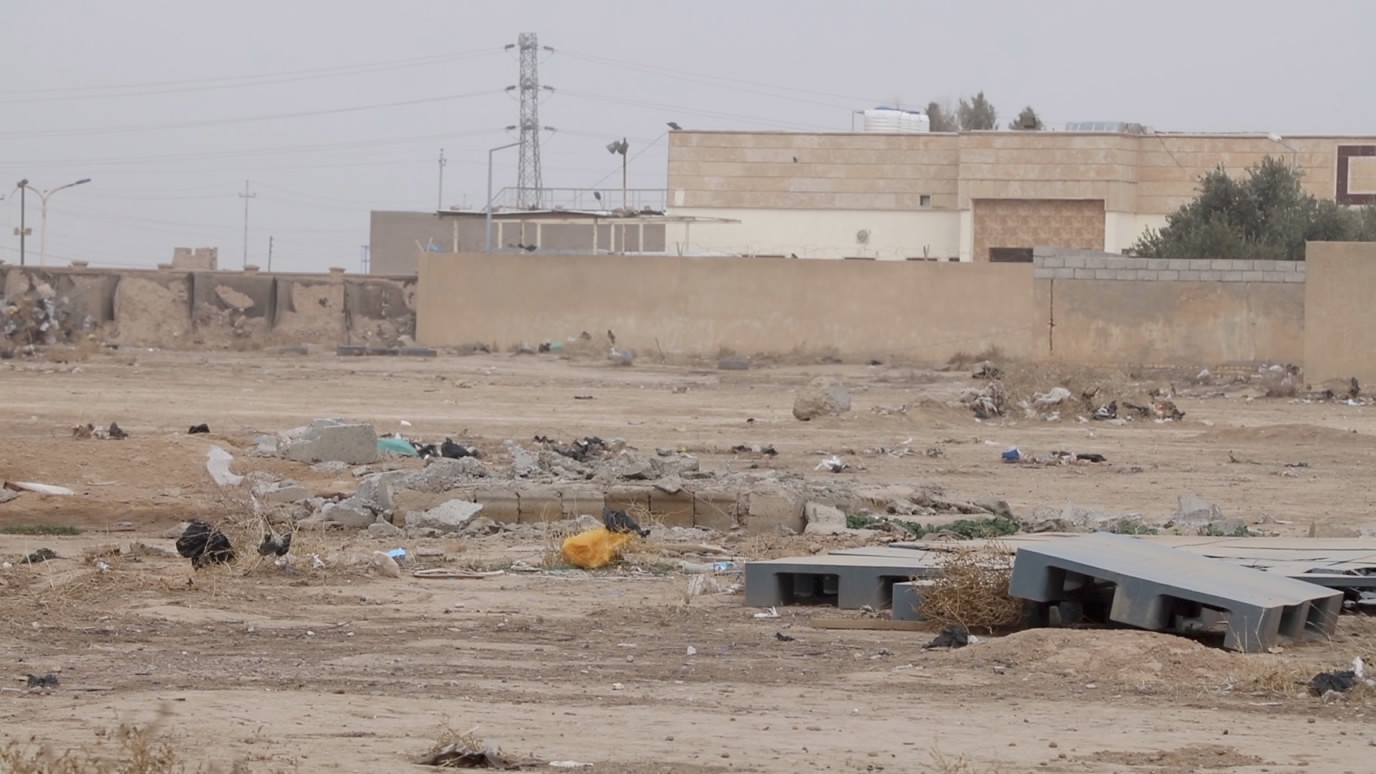
A typical view of an area in al-Udhaim, with scattered debris and rubbish. /CGTN Photo
A typical view of an area in al-Udhaim, with scattered debris and rubbish. /CGTN Photo
According to the World Health Organization, cutaneous Leishmaniasis is usually characterized by large outbreaks in densely populated cities, especially in war and conflict zones, refugee camps and in settings where there’s large-scale migration.

